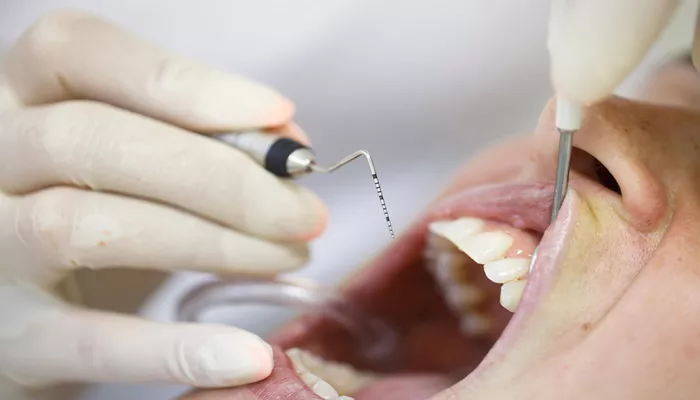Periodontal disease, commonly known as gum disease, is a significant oral health issue that affects a large portion of the adult population. It begins with inflammation and infection of the gums and can lead to serious complications, including tooth loss and bone damage if not addressed promptly. This article aims to provide a comprehensive overview of the warning signs and stages of periodontal disease, emphasizing the importance of early detection and treatment.
What Is Periodontal Disease?
Periodontal disease encompasses a range of inflammatory conditions affecting the tissues surrounding the teeth. It is primarily caused by the accumulation of plaque—a sticky film of bacteria that forms on teeth. If not removed through regular brushing and flossing, plaque can harden into tartar, leading to further complications.
The disease progresses through several stages:
Gingivitis: The earliest stage, characterized by swollen and bleeding gums.
Mild Periodontitis: Involves deeper gum infection, with pockets forming between gums and teeth.
Moderate Periodontitis: Increased severity with noticeable gum recession and potential bone loss.
Advanced Periodontitis: Severe damage to gums and bone, often resulting in tooth mobility or loss.
Early Warning Signs of Periodontal Disease
Recognizing the early warning signs of periodontal disease is crucial for effective intervention. Here are some common indicators:
1. Bleeding Gums
One of the most noticeable signs is bleeding gums, especially when brushing or flossing. Healthy gums should not bleed; thus, persistent bleeding indicates inflammation and irritation caused by plaque buildup.
2. Swollen or Red Gums
Gums affected by periodontal disease often appear swollen, red, or purplish instead of their normal pink color. This change in color and texture is due to increased blood flow to the area as a response to infection.
3. Gum Pain or Tenderness
Pain or tenderness in the gums can occur as the condition progresses. Individuals may experience discomfort when brushing or eating, making oral hygiene challenging.
4. Receding Gums
Receding gums make teeth appear longer than normal. This occurs as gum tissue pulls away from the teeth due to inflammation.
5. Persistent Bad Breath
Chronic bad breath (halitosis) or a bad taste in the mouth that does not improve with regular oral hygiene can be a sign of gum disease. This is often caused by bacteria present in infected gum pockets.
6. Loose Teeth
As periodontal disease advances, it can lead to loosening teeth due to loss of supportive bone structure around them. This symptom is particularly concerning and warrants immediate dental evaluation.
7. Pus Between Teeth and Gums
The presence of pus around the gums indicates an active infection and should be treated promptly to prevent further complications.
8. Changes in Bite Alignment
Individuals may notice changes in how their teeth fit together when biting down, which can be a sign that gum disease has progressed significantly.
Stages of Periodontal Disease
Understanding the stages of periodontal disease helps in recognizing how symptoms evolve over time:
Gingivitis: The only reversible stage where inflammation is present but no permanent damage has occurred yet.
Mild Periodontitis: Irreversible stage where pockets form between teeth and gums; professional cleaning is necessary.
Moderate Periodontitis: Further progression leads to more significant tissue destruction; treatment may involve scaling and root planing.
Advanced Periodontitis: Severe damage requiring surgical intervention; risk of tooth loss increases significantly.
Importance of Regular Dental Checkups
Regular dental visits are essential for early detection of periodontal disease. Dentists perform thorough examinations that include checking for signs such as bleeding gums, pocket depth measurements, and overall gum health assessments.
During these checkups, dentists may use tools like:
Probes: To measure pocket depths around each tooth; healthy pockets measure 1-3 mm.
X-rays: To assess bone loss around teeth that may not be visible during a visual exam.
Risk Factors for Periodontal Disease
Several factors can increase the risk of developing periodontal disease:
Poor Oral Hygiene: Inadequate brushing and flossing allow plaque buildup.
Smoking or Tobacco Use: Tobacco products impair blood flow to gums, hindering healing.
Hormonal Changes: Conditions such as pregnancy or menopause can make gums more sensitive.
Chronic Diseases: Conditions like diabetes can affect blood sugar levels, impacting gum health.
Medications: Certain medications can reduce saliva flow, increasing risk for gum disease.
Treatment Options for Periodontal Disease
If diagnosed with periodontal disease, treatment options vary based on severity:
Non-Surgical Treatments:
Scaling and Root Planing: Deep cleaning procedures to remove plaque and tartar from below the gum line.
Antibiotics: May be prescribed to help control bacterial infection.
Surgical Treatments:
Flap Surgery: Involves lifting back gums to remove tartar deposits from deep pockets.
Bone Grafts: Used to regenerate lost bone around teeth.
Conclusion
Periodontal disease is a common yet preventable condition that poses serious risks if left untreated. Awareness of its warning signs—such as bleeding gums, persistent bad breath, and loose teeth—is critical for early intervention. Regular dental checkups play an indispensable role in maintaining oral health and preventing advanced stages of periodontal disease.

